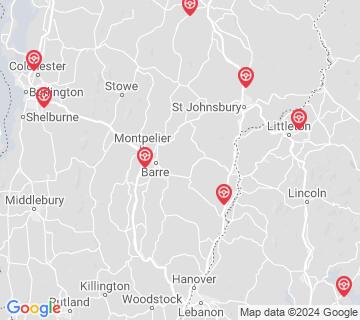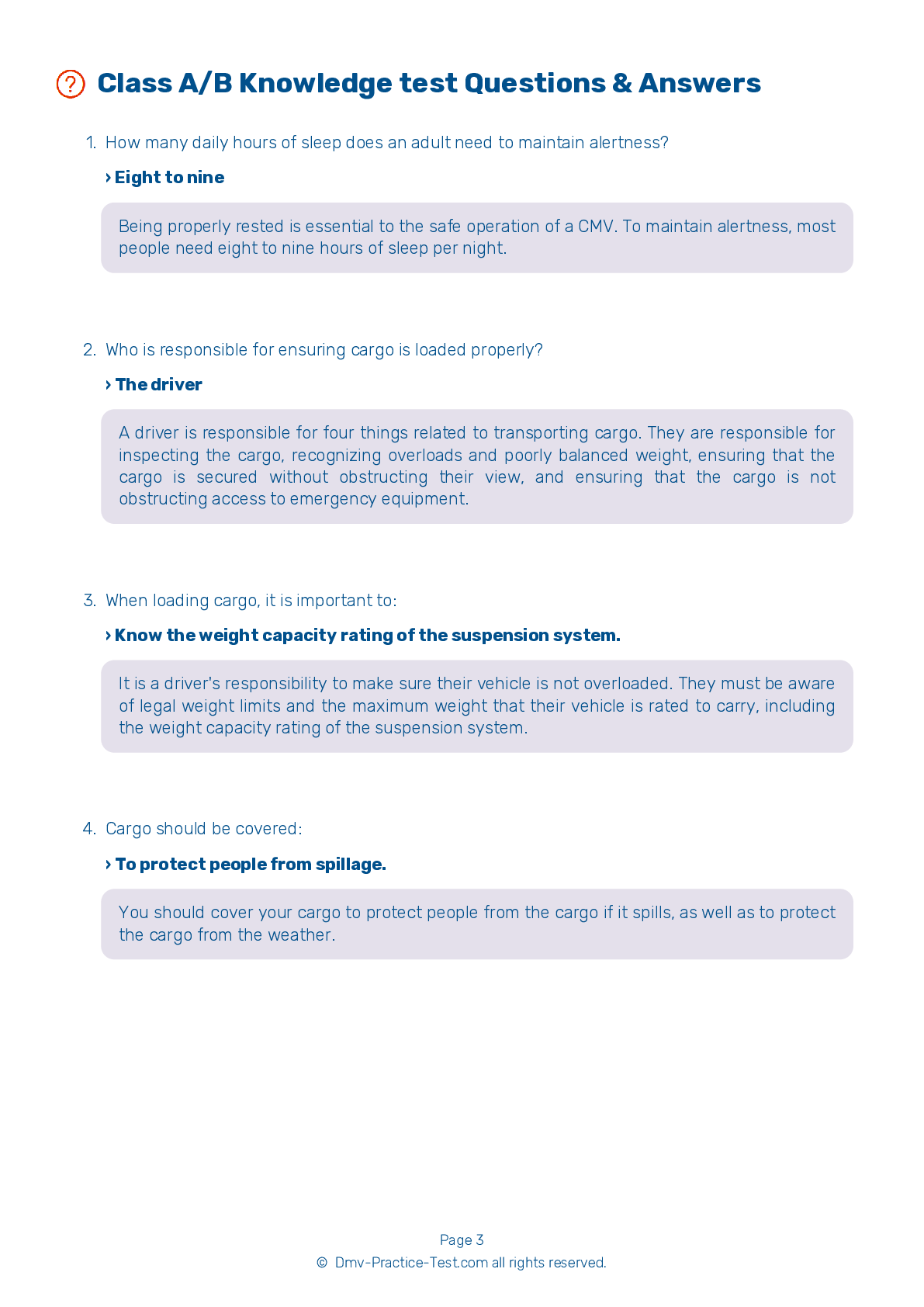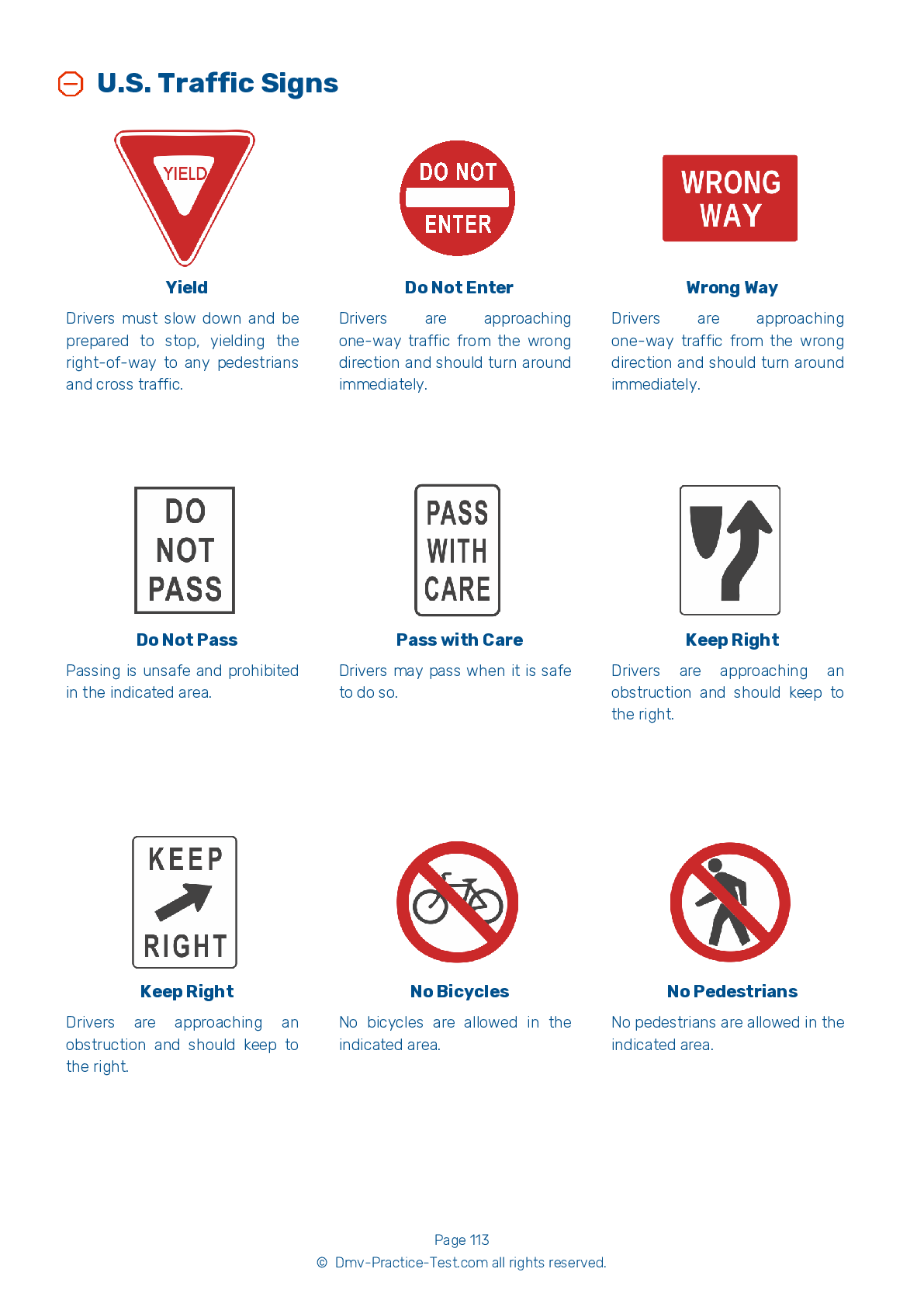Knowledge Test Class A #1
Class A Driving Test | Vermont 2025 #1 Page 7 of 7
Train for FREE online with our Vermont class A license test. The official exam test consists of several obligatory parts, with all of them checking your knowledge of different blocks of road rules. If you need to obtain a VT CDL class A permit in 2025, practice as much as possible. Free sample tests published on our website will help you check and improve your knowledge and boost your grades. Please bear in mind that CDL class A requirements may vary from state to state.
50
40
20
43 . Which of the following is not a sign of bad brakes?
When inspecting your brakes, you should check for cracked drums; shoes or pads covered in oil, grease, or brake fluid; and shoes that are missing, broken, or worn dangerously thin.
44 . How much distance will an air brake-equipped vehicle need to come to a complete stop if it is traveling at 55 mph under ideal driving conditions?
A vehicle's total stopping distance is made up of perception distance, reaction distance, brake lag distance, and braking distance. With all of these factors included, an air brake-equipped vehicle traveling at a speed of 55 mph under ideal driving conditions will need approximately 450 feet to come to a complete stop.
45 . While driving, you:
While driving a CMV, reading and sending text messages is prohibited. You may not hold a cell phone to make a voice call or dial a phone by pressing more than one button.
46 . Interstate carriers must have what information affixed to both sides of a CMV?
Federal Motor Carrier Safety Regulations (FMCSR) require carriers to affix the USDOT number to both sides of each CMV in their fleet.
47 . The parking brake in a newer vehicle is applied by:
In newer vehicles with air brakes, the parking brake is controlled by a yellow, diamond-shaped knob. The driver should pull the knob outward to apply the parking brakes and push the knob inward to release them.
48 . When completing an offset back/left parking maneuver, a driver should:
If you are asked to complete an offset back/left parking maneuver, you should first pull straight forward, then back up to the left. Your vehicle must be parked completely within the boundaries of the parking space.
49 . What does a vehicle inspection report do?
Drivers may be required to submit a written vehicle inspection report at the end of each day of driving. The motor carrier must repair any items in the report that affect safety and certify on the report that repairs were either made or unnecessary.
50 . If a load is 40 feet long, the minimum number of tie-downs required to secure the load is:
On flatbed trailers and trailers without sides, cargo must be tied down. There should be at least one tie-down for every 10 feet of cargo. Regardless of the size of the cargo, at least two tie-downs must be used.
Search the best driving school in your neighbourhood
2025 Vermont | Frequently Asked Questions
A CDL Class A license in Vermont is defined as a commercial driver's license that allows the holder to operate any combination of vehicles with a Gross Vehicle Weight Rating (GVWR) of 26,001 pounds or more, provided the GVWR of the vehicle(s) being towed exceeds 10,000 pounds. This typically includes tractor-trailers and truck and trailer combinations.
A Class A CDL license in Vermont allows the holder to operate vehicles such as tractor-trailers, truck and trailer combinations, tank vehicles, livestock carriers, and flatbeds. It covers any combination of vehicles with a Gross Vehicle Weight Rating (GVWR) of 26,001 pounds or more if the towed vehicle is over 10,000 pounds.
To obtain a Class A CDL license in Vermont, you must be at least 18 years old (21 for interstate driving), have a valid driver's license, pass a vision exam, and pass the General Knowledge test. You must also pass the Combination Vehicle test and a Pre-Trip Vehicle Inspection test. Lastly, you'll need to pass a skills test in the vehicle type that fits a Class A license.
In Vermont, you must be at least 18 years old to qualify for a Class A Commercial Driver's License (CDL) for intrastate driving (within Vermont only). However, you must be at least 21 years old to drive interstate (across state lines), carry hazardous materials, or transport passengers.
Specific endorsements aren't required for a Class A CDL license in Vermont, but they can provide additional driving privileges. For instance, if you plan to haul hazardous materials, transport passengers, or drive tank vehicles or double/triple trailers, you would need to obtain the corresponding endorsements by passing specific knowledge tests.
The Class A CDL skills test in Vermont has three parts: the Vehicle Inspection Test, the Basic Vehicle Control Test, and the On-Road Driving Test. The test assesses your ability to inspect your vehicle before driving, control the vehicle during different maneuvers, and drive safely in various road and traffic conditions.
Yes, there are limitations for Class A CDL license holders in Vermont. For instance, drivers under 21 can only operate within Vermont (intrastate). Also, certain endorsements like HazMat require a driver to be at least 21. Furthermore, drivers are subject to strict blood alcohol content levels and may face severe penalties for violations.
In Vermont, the written Class A CDL test is primarily offered in English. However, some locations may offer the test in other languages. It's best to contact the local DMV office directly to inquire about language options. For non-English speakers, an interpreter service may be available but it's subject to certain rules and restrictions.
Yes, you can request accommodations for the Class A CDL written test in Vermont if you have a disability. The Vermont DMV is committed to providing equal access to all services, including testing accommodations. These may include sign language interpreters, extended testing time, or tests in alternative formats. Contact your local DMV office to discuss your specific needs.
Yes, if you don't pass the Class A CDL written test in Vermont, you can retake it. However, you must wait at least one day before retesting. There is also a retesting fee that you'll need to pay each time. It's advisable to review your study materials thoroughly before attempting the test again.




